And every year it’s guaranteed some new twist will emerge. This year it’s been the recommendation by Cricket Australia to remove Australia Day branding from January 26 Big Bash League matches, sparking another bout of ritualistic jousting.
As shock jocks fulminated, Prime Minister Scott Morrison suggested CA keep its nose out of politics, but didn’t help matters with an ill-judged observation that British convicts arriving on the First Fleet on January 26, 1788 hadn’t had a “particularly flash day” either.
Parkin, a Quandamooka man whose customary home turf is North Stradbroke island, says the debate is “important to people and we can’t wish it away” but that it will remain “until we deal with it in a real and substantive way”.
That, he says, will require the country to “reimagine itself with Aboriginal and Torres Strait Islander people, heritage and cultures at the core of a much fuller national identity”.
Others take the approach of IndigenousX media group chief executive Luke Pearson, who was originally a driving force behind the “Change the Date” movement on social media but has now disavowed the slogan, saying it’s the nation itself that needs to change.
Dean Parkin is the project director of the From the Heart campaign.Credit:Brian Cassey
Similarly, criminal defence barrister and Wiradjuri and Wailwan woman Teela Reid argues that Australia Day itself should be abolished “until we have an honest national conversation about what it means to live in Australia, by telling the truth of our history … people need to do the work 365 days of the year, because that is what it’s like for us; it is not one day a year showing up in the street. We don’t get the luxury of switching off.”
For other Indigenous leaders, repetitive though it may be, the debate at least serves the purpose of drawing ever more Australians into a better appreciation of the lived and remembered experience of the country’s First Nations people.
Constitutional law expert and Cobble Cobble woman Professor Megan Davis says: “All Australians know that each year the month of January and the 26th is becoming more controversial and becomes more traumatic for many Aboriginal and Torres Strait Islander peoples”.
This January, however, there has been an even more profound issue on the minds of those in the Indigenous community who want a fundamental reworking of the way in which the country relates to its First Nations peoples.
Loading
Nine days into the new year, federal Indigenous Australians Minister Ken Wyatt published a report that is likely to become a touchstone in 2021 for a fresh debate over whether – and if so, when and how – Aboriginal and Torres Strait Islander peoples will be recognised in the Australian Constitution.
The report is the work of a committee appointed by Wyatt in late 2019 to advise on co-designing a “Voice” for Indigenous Australians, as recommended by cultural leaders who gathered at Uluru in May 2017 and issued a solemnly worded document that they called a “Statement from the Heart”.
The Uluru Statement was a succinct but eloquent plea for truth-telling, for Makarrata (or treaty-making processes) and for a Voice (a representative body for Indigenous Australians) that would be embedded in the constitution in order to protect it from abolition at the whim of future governments.
The initial response from then prime minister Malcolm Turnbull was to dismiss the proposed Voice as unworkable, a “third chamber” of Parliament (a judgment since repudiated by a number of senior constitutional experts).
The Morrison government’s response has been more opaque. At various times it has raised, then seemed to dash, the hopes of those who see embedding a Voice in the constitution as key to its success and its moral authority within the broader Australian community.
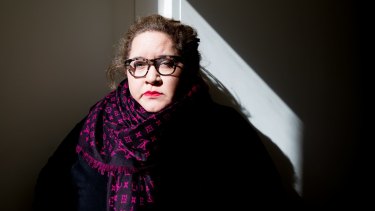
Megan Davis says January 26 is becoming increasingly controversial for many Australians.Credit:Edwina Pickles
Acting on the recommendations of a parliamentary joint select committee, which considered the Uluru proposals, Wyatt appointed a senior advisory panel of Indigenous leaders and officials to “co-design” the Voice, which he wants to be legislated before the next election.
But the Morrison government’s terms of reference for the co-design process explicitly excluded it from making recommendations on constitutional recognition – even though, going into the 2019 election, the Liberal Party’s election platform committed to “a referendum … once a model [for a Voice] has been settled”.
Wyatt has also repeatedly described the proposed Voice as being to “government”, rather than to Parliament as sought by the Uluru gathering.
Despite this, the co-design committee, chaired jointly by respected Indigenous leaders Professor Marcia Langton and Professor Tom Calma, has come up with interim recommendations that envisage the Voice as being both to government and to Parliament.
And according to at least one Indigenous leader, who wished to remain anonymous, this will “inevitably invite submissions” on the constitutional enshrinement issue.
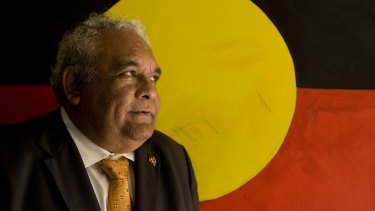
Tom Calma, along with Marcia Langton, has come up with an interim recommendations. Credit:Jacky Ghossein
The proposed Voice would have 16 to 18 members at the national level, comprising two representatives from each state and territory plus several from the Torres Strait Islands, as well as linking in to a system of up to 35 regional and local Voices.
Its key task would be to advise legislators and government policymakers on matters of “critical importance to the social, spiritual and economic wellbeing of Aboriginal and Torres Strait Islander peoples”. It would be advisory only, would not deliver programs or manage funding, and would not cut across existing Indigenous peak organisations. At the regional level, Voice structures could draw on a mix of existing “customary, traditional and contemporary” arrangements.
The committee’s interim report teases out – over nearly 240 pages – a number of options for how this complex machinery might work.
Co-chair Tom Calma says the committee wants to get as much feedback as possible from non-Indigenous as well as Indigenous Australians between now and May, and will hold meetings in up to 60 communities around the country, including Alice Springs, Yuendumu, Arnhem Land, the Torres Strait and Cape York.
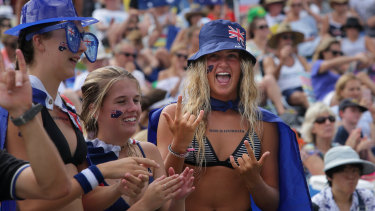
Some argue that it is not the Australia Day date that needs to change but, rather, Australia. Credit:John Veage
He also told the Herald he wasn’t convinced that the government had entirely ruled out constitutional enshrinement – though admitting “it’s a bit hard to follow sometimes”. But he added: “We should not think it [constitutional enshrinement] is the be-all and end-all”, as any government could simply starve any such body of funds if it was so minded.
“People need to understand that this exercise we are working on is a response to the joint select committee of Parliament; it’s not a response to the Uluru Statement,” Calma insists. “Hopefully, [the Voice] will get bipartisan support and go through as legislative reform and then, at a future time, it may be to a referendum.”
Significantly, the most senior Liberal on the earlier parliamentary committee, Julian Leeser, this week seemed to pour cold water on the aspirations for constitutional recognition, writing in The Australian that the “key issue at stake now is not words in the constitution” but “get[ting] local and regional bodies right”.
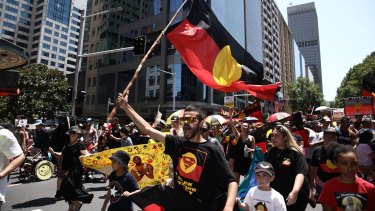
Australia’s attitudes towards Australia Day is starting to change. Credit:Dominic Lorrimer
However, on Friday, Mark Leibler, a senior partner in Arnold Bloch Leibler and co-chair of the Referendum Council, countered that his own dealings with the Prime Minister had led him to believe Morrison was “genuinely open” to taking a constitutionally enshrined Voice to a referendum.
Regardless of how these varying smoke signals are interpreted, most Indigenous leaders the Herald spoke to in recent days are adamant that putting the Voice on a constitutional footing is vital to the project’s success.
James Christian pays tribute to the “very wise heads” that put the co-design report together but accuses the government of placing them in “straitjackets” and “subjecting them to gag orders” on the question of constitutional recognition. (Mr Wyatt did not respond to a Herald invitation to discuss the co-design report.)
Christian says there will be “trepidation” among Indigenous people that the report is a “stepping stone without a destination” unless there is constitutional recognition for the Voice.
Megan Davis, who holds the Balnaves chair in constitutional law at the University of New South Wales, says “although Wyatt excluded Uluru from the committee’s work, the Voice to Parliament proposal invites comparison with constitutional protection”. She says she expects the government to “honour their election policy, to hold a referendum after the body is designed”.
Davis was also a signatory to a communique from 43 legal scholars and practitioners issued this week and arguing that “it is our strong and unanimous view that for the Voice to have legitimacy … it must be constitutionally enshrined”.
Parkin sees the report from Calma’s committee as an “important milestone” and a “really constructive step”. But he remains adamant that his From the Heart organisation is “absolutely driven” by the Uluru vision and that “the legislative design of the Voice cannot be decoupled from its constitutional enshrinement”.
The submission from Parkin’s organisation also questions the co-design committee’s preference for a maximum 18-person National Voice based on equal representation for the states and territories.
It puts a counter view that “restricting the number of representatives to the National Voice to two per state and territory significantly increases the likelihood that only people with existing authority and profile will be selected/elected to the National Voice” and that not enough representation is afforded to regional and remote areas under the proposed model.
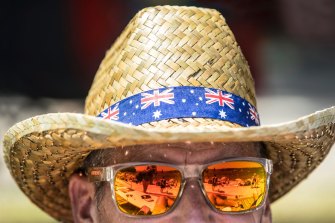
Some are calling for the Australia Day date to be put to a plebiscite. Credit:Jessica Hromas
Another key player is Reconciliation Australia, which has just notched up its 20th year. Under the leadership of chief executive Karen Mundine, a Bundjalung woman from northern NSW, the organisation welcomes the fact that “there is a process on the table” and encourages as many people as possible to get involved. But Mundine, too, flags the primacy of the Uluru objectives.
She says the pace of change can be “frustrating at times” but “the thing that does make me positive and helps me get out of bed in the morning is that a change has happened … We are seeing greater than ever support for ideas of reconciliation, more than 90 per cent of Australians think the relationship between First Nations people and other Australians is important”.
She says the Black Lives Matter protests, coming off the back of the movement in the United States last year, drove a spate of inquiries and calls to her organisation, giving a “global dimension” to its long-standing campaign against racism, disproportionately high Aboriginal incarceration rates and “all those things like institutional integrity that we have been talking about for years”.
Australia’s Indigenous leaders, out of necessity, have become used to playing a long game. Calma says: “At least we are going forward, not going backwards. We will be at the table and that’s more than we have had with the old revolving doors of the past.”
He urges patience, saying: “This is not the end product, it’s the beginning product; public policy and attitude does not change overnight.”
For others, though, patience is wearing thin. And while much energy will now go into debating the finer points of a Voice design over coming months, few Indigenous leaders are going to be diverted from the ultimate goal of eventually anchoring it where they believe it belongs – in the nation’s founding document.
Deborah Snow is a senior writer for The Sydney Morning Herald.
Most Viewed in Politics
Loading







